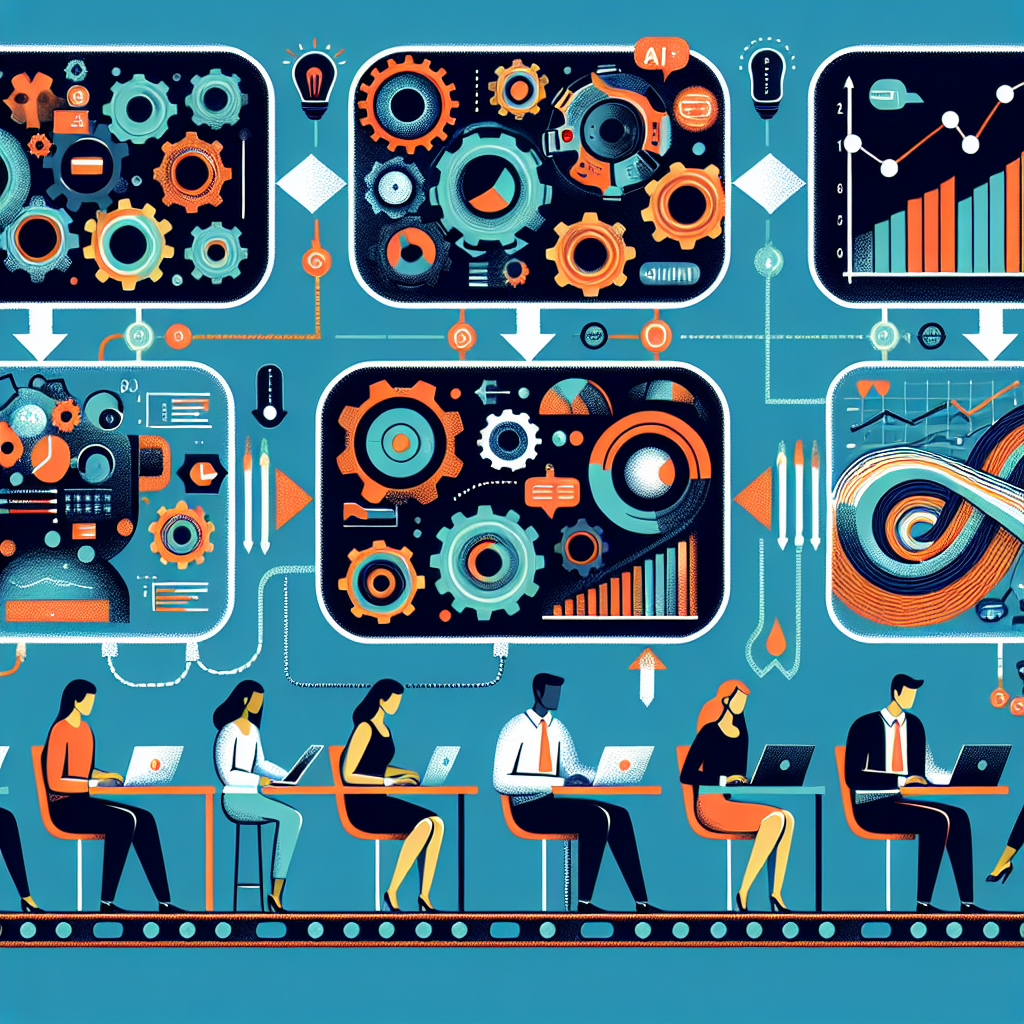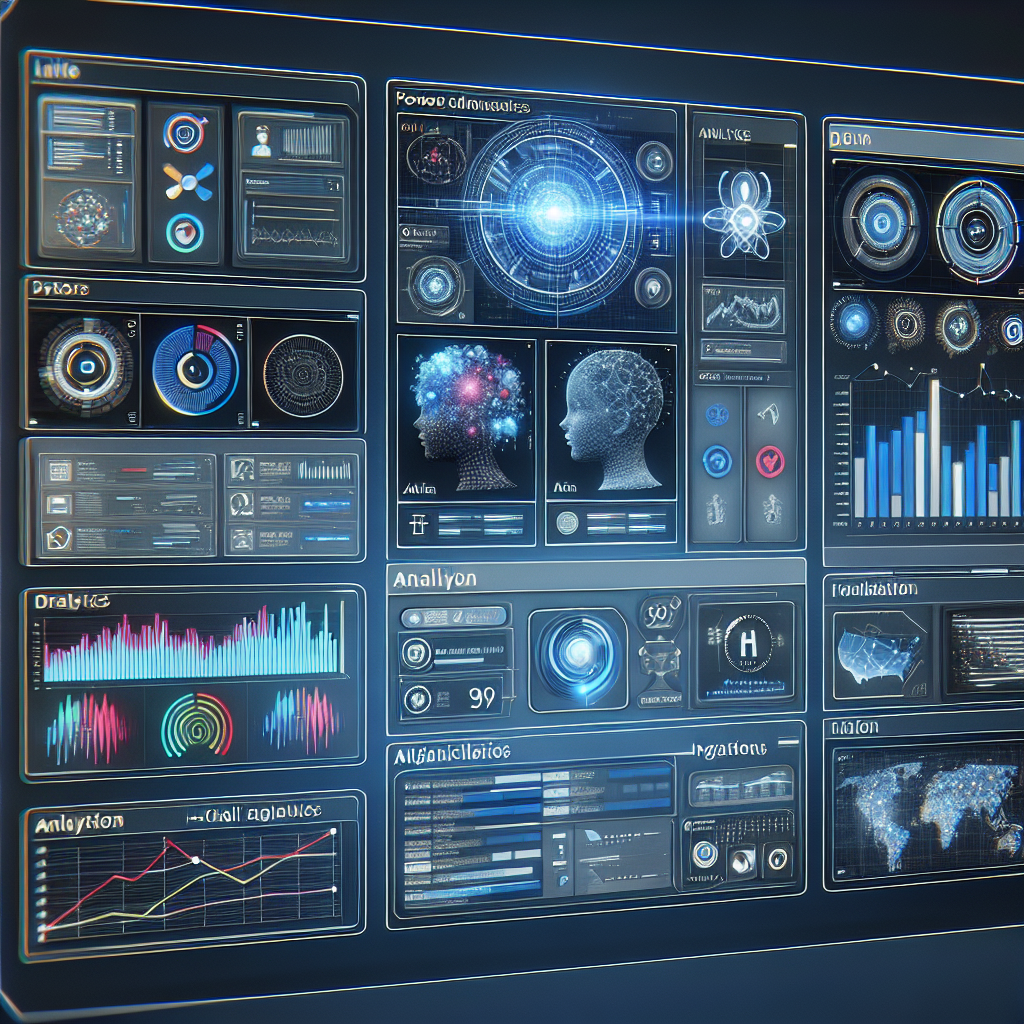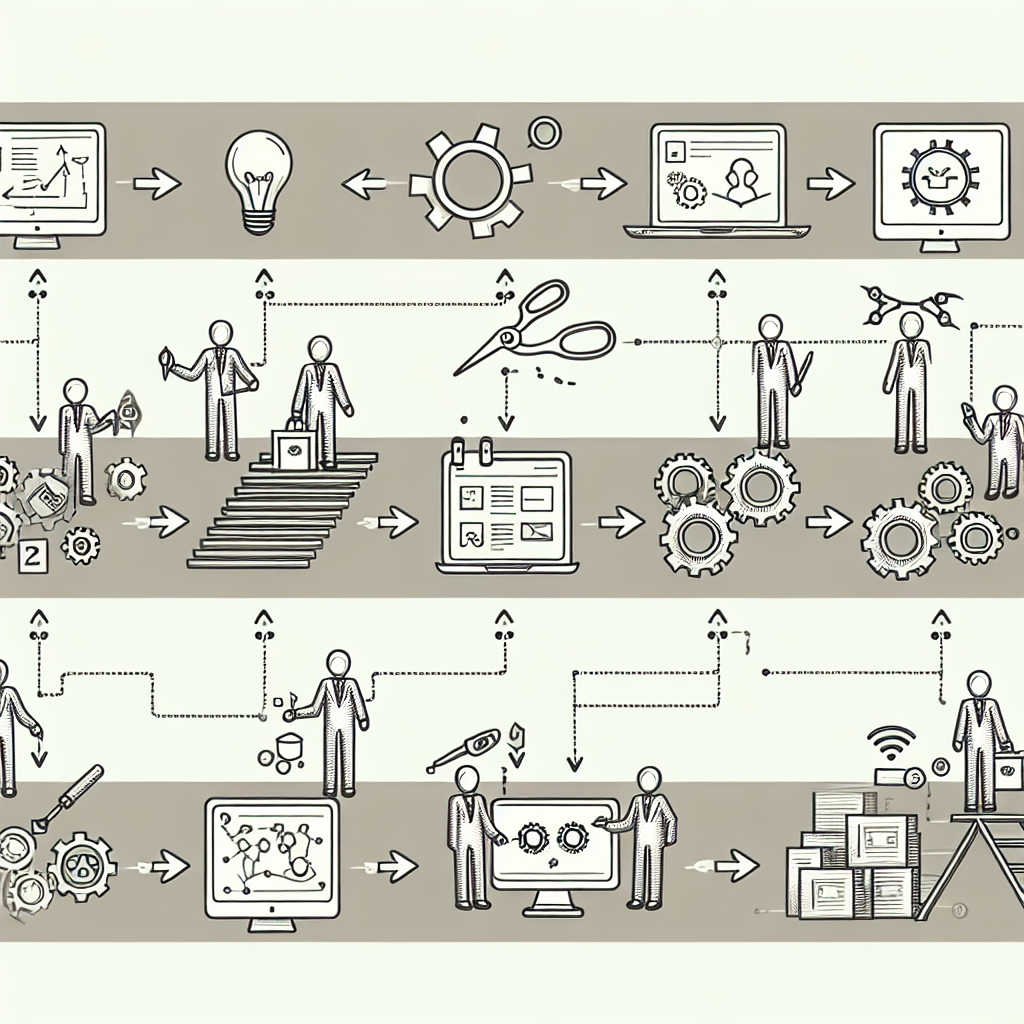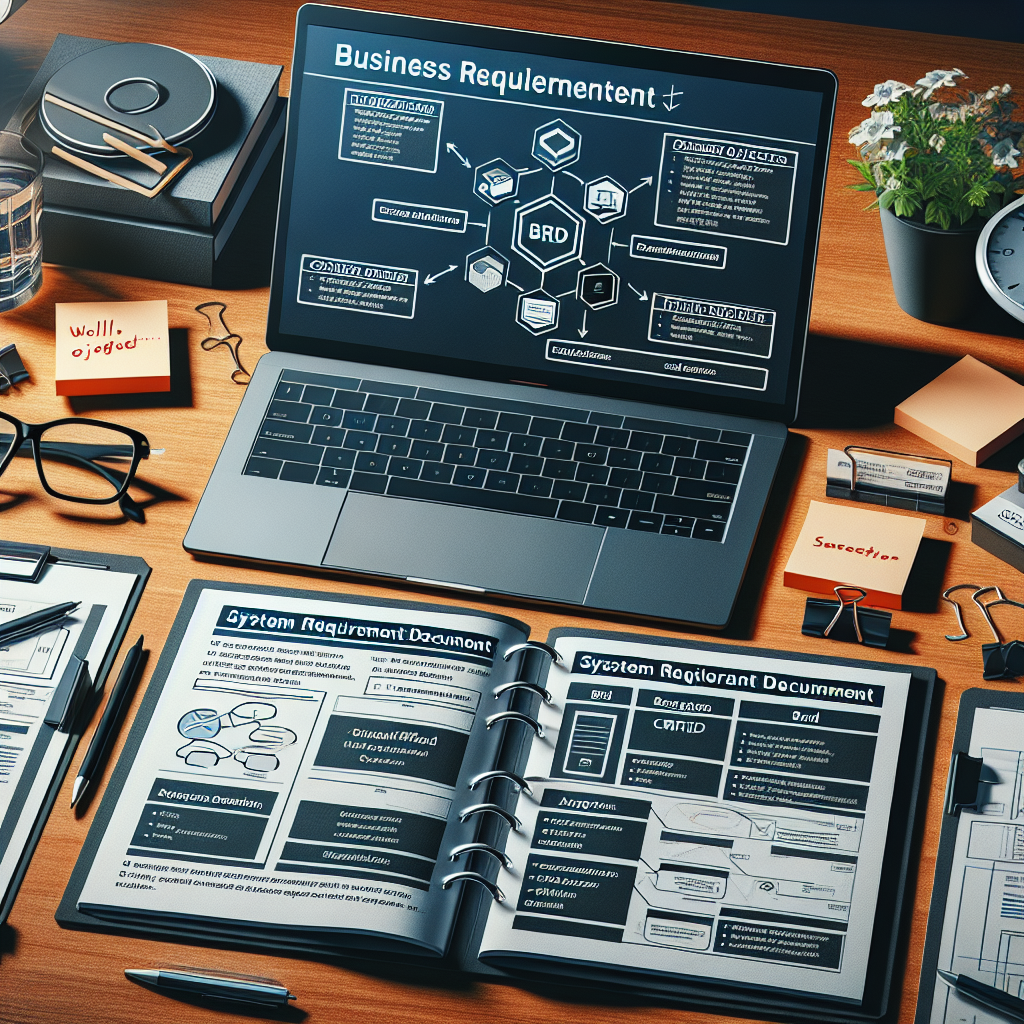Real-World Examples of AI Enhancing Business Analyst Productivity

Artificial Intelligence is rapidly transforming how business analysts work, making their jobs more efficient and insightful. Let’s dive into some fascinating real-world examples that showcase how AI is revolutionizing business analysis! What Are the Key Ways AI Boosts Business Analyst Productivity? Automated Data Processing: AI can quickly analyze massive datasets that would take humans weeks or months Predictive Analytics: Machine learning algorithms can forecast trends with remarkable accuracy Pattern Recognition: AI identifies complex patterns humans might miss Practical Case Studies 1. Financial Services Example JPMorgan Chase uses an AI system called COIN (Contract Intelligence) that: Reviews commercial loan agreements Completes tasks in seconds that previously took 360,000 hours of human work annually Reduces human error dramatically 2. Retail Sector Innovation Walmart leverages AI to: Predict inventory needs with 95% accuracy Optimize supply chain logistics Personalize customer recommendations Pro Tips for Business Analysts Embrace AI as a collaborative tool, not a replacement Continuously update your technical skills Focus on interpreting AI insights strategically The Human Touch Remains Critical While AI dramatically enhances productivity, successful business analysts will be those who combine technological capabilities with critical thinking and emotional intelligence.
How to Identify Automation Opportunities During Requirement Gathering

Uncovering Automation Gold: Your Guide to Finding the Right Opportunities Let’s face it – not every process is a good candidate for automation. But how do you separate the automation gems from the duds? Don’t worry, I’ll walk you through some practical strategies to identify those sweet spots during requirement gathering! What Makes a Process Automation-Worthy? Here are the key characteristics to look for: Repetitive Tasks: Processes that happen frequently and follow consistent steps High Volume: Activities performed multiple times daily or weekly Rule-Based Processes: Clear, predictable decision-making workflows Time-Consuming Manual Work: Tasks that currently drain team productivity Smart Detection Strategies When gathering requirements, try these detective techniques: Shadow the Team Observe current workflows Ask: “How much time do you spend on this?” Look for repetitive mouse clicks or data entry Listen for Pain Points Note phrases like “I always have to…” or “This takes forever” Identify bottlenecks and frustrating manual steps Quantify the Potential Impact Calculate current time spent on tasks Estimate potential time savings Consider cost and efficiency gains Red Flags: When NOT to Automate Not every process is automation-friendly. Beware of: Highly variable or creative processes Tasks requiring complex human judgment Infrequent activities Processes with frequent exceptions Pro Tips for Success Remember, effective automation is about strategic selection. Start small, prove value, and gradually expand. Involve your team, gather their insights, and always keep the end goal of improving efficiency and reducing manual strain. Happy automation hunting! 🚀
From Insight to Impact: Bridging Business Analysis and AI Automation

Hey there, business innovators and tech enthusiasts! 🚀 Ready to explore how business analysis and AI automation are transforming the modern workplace? Let’s dive into a conversation that breaks down complex concepts into digestible insights. What Exactly is the Connection Between Business Analysis and AI? Think of business analysis and AI automation as the ultimate power couple of the corporate world. Business analysts are like strategic detectives, uncovering insights and identifying opportunities, while AI acts as a superhuman assistant capable of turning those insights into rapid, scalable actions. Key Benefits of Integrating AI with Business Analysis Enhanced Decision Making: AI provides data-driven insights at lightning speed Process Optimization: Automate repetitive tasks and minimize human error Predictive Capabilities: Forecast trends and potential challenges before they emerge Common Challenges in Implementation Let’s be real – integrating AI isn’t always smooth sailing. Organizations often face: Data quality and accessibility issues Skill gap in AI understanding Cultural resistance to technological change Practical Steps to Get Started Want to bridge the gap between analysis and automation? Here are some actionable strategies: Invest in training programs Start with small, manageable AI pilot projects Foster a culture of continuous learning Collaborate across departments The Human Touch: Why Analysts Remain Crucial Despite AI’s incredible capabilities, human analysts provide critical context, emotional intelligence, and strategic thinking that algorithms can’t replicate. AI is a tool, not a replacement. Future Outlook The synergy between business analysis and AI is just beginning. As technologies evolve, we’ll see even more sophisticated, intelligent systems that augment human capabilities rather than replace them. Pro Tip: Embrace learning, stay curious, and view AI as your collaborative partner in driving business excellence!
How AI and Business Analysis Together Drive Digital Transformation

In today’s rapidly evolving digital landscape, businesses are constantly seeking innovative ways to stay competitive and relevant. One powerful combination that’s driving significant change is the synergy between Artificial Intelligence (AI) and Business Analysis. Let’s dive into how these two forces are revolutionizing digital transformation! What Exactly is Digital Transformation? Think of digital transformation as a complete makeover for businesses, where traditional processes are reimagined using cutting-edge technology. It’s not just about adding new tech – it’s about fundamentally changing how organizations operate and deliver value to customers. How Do AI and Business Analysis Work Together? Data-Driven Insights: AI helps business analysts process massive amounts of data quickly and accurately Predictive Analytics: Machine learning algorithms can forecast trends and potential business opportunities Process Optimization: AI identifies inefficiencies that human analysts might miss Real-World Benefits Imagine being able to: Predict customer behavior with unprecedented accuracy Streamline complex business processes Make faster, more informed strategic decisions Challenges to Consider While the potential is exciting, businesses must also navigate: Data privacy concerns Ethical AI implementation Skill gap in AI and advanced analytics Key Takeaway Digital transformation isn’t about replacing humans – it’s about empowering them with powerful tools that enhance decision-making and creativity. “The most successful digital transformations are those that combine technological innovation with human insight.” – Digital Transformation Experts Getting Started Businesses looking to leverage AI and business analysis should: Invest in training and upskilling Start with small, manageable AI integration projects Foster a culture of continuous learning and innovation Ready to transform your business? The future is now, and it’s powered by AI and smart business analysis!
Creating AI-Powered Dashboards for Real-Time Decision-Making

AI-Powered Dashboards: Your Ultimate Guide to Real-Time Decision Making Ever wondered how top organizations make lightning-fast, data-driven decisions? The secret weapon is AI-powered dashboards! Let’s break down everything you need to know about these incredible tools. What Exactly Are AI-Powered Dashboards? Think of these dashboards as your super-smart data assistants. They’re not just static displays of numbers, but intelligent systems that: Analyze complex data in real-time Predict trends and potential outcomes Provide actionable insights instantly Adapt and learn from new information Key Benefits That Will Blow Your Mind Speed: Decisions happen in seconds, not days Accuracy: AI reduces human error dramatically Predictive Power: Anticipate challenges before they emerge Common Implementation Challenges (And How to Overcome Them) While AI dashboards sound incredible, they’re not magic. Successful implementation requires: High-quality, clean data Clear organizational goals Robust technological infrastructure Continuous training and adaptation Pro Tips for Getting Started Ready to dive in? Here’s expert advice: Start small and scale gradually Invest in employee training Choose platforms with strong customization options Prioritize data security and privacy “AI-powered dashboards aren’t just tools—they’re strategic partners in modern decision-making.” – Tech Innovation Quarterly Remember, the goal isn’t just collecting data—it’s transforming information into intelligent, immediate action.
Automating Data Analysis with AI: Tools and Strategies

Demystifying AI-Powered Data Analysis: Your Friendly Guide Ever feel overwhelmed by mountains of data and endless spreadsheets? You’re not alone! Let’s dive into how AI can transform your data analysis from a tedious chore into a powerful, insightful process. What Exactly is AI-Powered Data Analysis? Think of AI data analysis like having a super-smart assistant who can: Quickly process massive amounts of data Identify patterns humans might miss Generate actionable insights in minutes Reduce human error and bias Top AI Tools to Transform Your Data Game Here are some game-changing tools that can supercharge your analysis: DataRobot: Perfect for predictive modeling Power BI with AI capabilities: Great for visualization Tableau AI: Intuitive insights generation H2O.ai: Advanced machine learning algorithms Getting Started: Practical Tips Don’t be intimidated! Here are some beginner-friendly strategies: Start with small, clean datasets Learn basic machine learning concepts Take online courses in AI data analysis Experiment with free tool versions Key Considerations Important note: While AI is powerful, it’s not magic. Always: Verify AI-generated insights Understand the underlying algorithms Maintain data privacy and ethical standards The Future is Collaborative AI isn’t replacing humans—it’s empowering us to make smarter, faster decisions. By combining human creativity with AI’s computational power, we’re entering an exciting new era of data analysis!
Leveraging Make.com for Business Process Automation

Simplifying Your Workflow: A Guide to Make.com Automation Ever feel like you’re drowning in repetitive tasks that eat up your valuable time? Let’s talk about how Make.com (formerly Integromat) can be your secret weapon for business process automation! What Exactly is Make.com? Imagine a digital Swiss Army knife that connects your favorite apps and automates workflows without requiring complex coding skills. That’s Make.com in a nutshell! It’s a powerful visual automation platform that lets you create intricate workflows with simple drag-and-drop interfaces. Why Should Businesses Care? Time Savings: Automatically handle tasks that would typically take hours Error Reduction: Minimize human error in repetitive processes Scalability: Easily adapt your workflows as your business grows Real-World Automation Examples Sales Lead Management: Automatically capture web form submissions and sync them with your CRM Customer Support: Route support tickets across multiple platforms instantly Marketing Workflows: Synchronize customer data between email marketing tools and spreadsheets Getting Started: Pro Tips Don’t get overwhelmed! Start small with simple automations and gradually build complexity. Make.com offers numerous templates to help beginners jumpstart their automation journey. Key Considerations While Make.com is incredibly powerful, remember to: Map out your current processes carefully Test automations thoroughly before full implementation Regularly review and optimize your workflows A Final Word of Advice Automation isn’t about replacing human creativity—it’s about freeing up your team to focus on high-value strategic work. Make.com is your partner in working smarter, not harder!
5 Ways AI is Revolutionizing Business Analysis

In today’s fast-paced digital landscape, Artificial Intelligence (AI) is transforming how businesses understand and optimize their operations. Let’s dive into the exciting ways AI is revolutionizing business analysis! What Makes AI Such a Game-Changer? AI isn’t just a buzzword – it’s a powerful tool that’s reshaping how companies make decisions. Here are five incredible ways AI is changing business analysis: 1. Predictive Analytics on Steroids Imagine having a crystal ball that actually works! AI-powered predictive analytics can now: Forecast market trends with unprecedented accuracy Identify potential risks before they become problems Predict customer behavior with remarkable precision 2. Automated Data Processing Say goodbye to endless spreadsheets and manual number-crunching. AI can now: Process massive amounts of data in seconds Identify patterns humans might miss Reduce human error dramatically 3. Enhanced Customer Insights AI takes customer analysis to a whole new level by: Analyzing customer interactions across multiple channels Creating hyper-personalized marketing strategies Predicting customer churn and satisfaction 4. Real-Time Decision Support Business leaders can now make more informed decisions with: Instant data analysis Contextual recommendations Dynamic scenario modeling 5. Cost and Efficiency Optimization AI helps businesses become leaner and more competitive by: Identifying unnecessary expenses Streamlining operational processes Suggesting strategic improvements Pro Tip: Embracing AI Responsibly While AI is incredibly powerful, it’s crucial to remember that it’s a tool, not a replacement for human insight. The most successful businesses will be those that blend AI capabilities with human creativity and strategic thinking. Ready to future-proof your business analysis? The AI revolution is here, and it’s time to jump on board!
How to Create High-Impact BRDs and SRDs

Mastering Business and Software Requirements Documents: Your Ultimate Guide Are you ready to transform your requirements documentation from boring paperwork into powerful communication tools? Let’s dive into creating Business Requirements Documents (BRDs) and Software Requirements Specifications (SRDs) that truly make an impact! What Makes a Great Requirements Document? Think of your BRD or SRD as a roadmap that guides your entire project. A high-impact document should: Tell a Clear Story: Explain the project’s purpose and vision Be Specific and Measurable: Use concrete language and quantifiable objectives Engage Stakeholders: Create a document that speaks to both technical and non-technical audiences Key Components of a Killer Requirements Document Executive Summary Capture the essence of your project in a concise, compelling paragraph that makes stakeholders want to read more. Detailed Requirements Break down complex requirements into clear, actionable items that leave no room for misinterpretation. Visual Aids Include diagrams, flowcharts, and wireframes to make your document more engaging and understandable. Pro Tips for Requirements Documentation Here are some expert strategies to elevate your BRDs and SRDs: Use active voice and clear, jargon-free language Get buy-in from all stakeholders during the drafting process Review and validate requirements multiple times Create a living document that can adapt to project changes Common Pitfalls to Avoid Watch out for these documentation mistakes: Being too vague or too technical Neglecting stakeholder input Failing to prioritize requirements Ignoring potential risks and constraints Final Thoughts Creating exceptional BRDs and SRDs is an art and a science. By focusing on clarity, collaboration, and comprehensive detail, you’ll create documents that not only guide your project but inspire your team to excel. Remember: A great requirements document is your project’s first step toward success!
